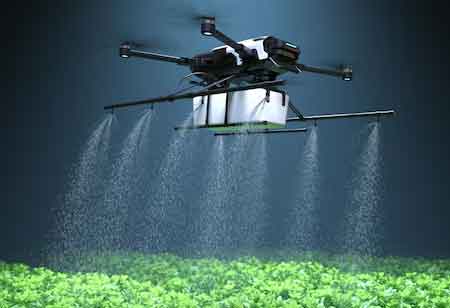Thank you for Subscribing to Agri Business Review Weekly Brief
The Future of Farming: Overcoming Challenges in Agricultural Equipment
The farm equipment sector faces challenges, but investing in training and technology can boost efficiency and sustainability, benefiting farmers and the environment.

By
Agri Business Review | Thursday, March 06, 2025
Stay ahead of the industry with exclusive feature stories on the top companies, expert insights and the latest news delivered straight to your inbox. Subscribe today.
Fremont, CA: The agricultural sector is undergoing a significant transformation driven by technological innovations and a growing emphasis on sustainability. However, integrating advanced agricultural equipment into farming practices presents various challenges that farmers and manufacturers must navigate to realize the potential of these innovations. Understanding and addressing these challenges is crucial for improving efficiency and sustainability in agriculture.
Overcoming Barriers to Advanced Agricultural Equipment Adoption
One of the primary barriers to adopting advanced agricultural equipment is the high initial cost. Cutting-edge machinery, such as autonomous tractors and precision farming tools, often carries a hefty price tag that can be prohibitive, particularly for smaller farms. Many farmers face difficulties justifying such investments amid limited financial resources and uncertain market conditions. To address this issue, manufacturers can consider offering flexible financing options, including loans, leases, or subscription models.
Additionally, government incentives and grants to encourage technology adoption in agriculture could significantly subsidize costs, making advanced equipment more accessible to a broader range of farmers. Another substantial challenge is the dependence on connectivity and infrastructure necessary to use modern agricultural technology effectively. Many rural areas suffer from inconsistent internet access and unreliable electricity supply, restricting farmers' ability to utilize essential digital farming tools like IoT devices and data analytics systems.
This digital divide hampers operational efficiency and limits farmers from reaping the full benefits of technological advancements. Collaboration between technology companies and local governments is essential to combat this challenge. Investments in rural broadband and energy infrastructure can facilitate better connectivity. Developing hybrid systems allowing offline data collection, which can later synchronize when connectivity is available, can also help bridge the gap for farmers in underserved areas.
Bridging the Skill Gap and Ensuring Reliable Maintenance
The rapid pace of technological advancements in agricultural equipment has created a pressing need for skilled personnel to operate and maintain these complex machines. Many farmers lack the necessary technical expertise, resulting in underutilization of available equipment. Comprehensive training programs focusing on the operation of new technologies can help close this skill gap. Manufacturers and agricultural extension services can collaborate to provide hands-on training, workshops, and certification programs.
Additionally, making online resources and tutorials available to farmers can enable them to educate themselves about the latest agricultural technologies at their own pace. Maintenance and reliability pose another challenge for advanced agricultural equipment. These machines often require specialized maintenance, which can be burdensome for farmers who might not have easy access to qualified service technicians. Breakdowns can lead to costly downtimes during critical farming periods, impacting yield and profitability.
Establishing a robust service network is essential. Manufacturers should invest in creating local service centers and incentivizing technicians to gain expertise in modern machinery. Furthermore, offering predictive maintenance solutions powered by IoT can be beneficial, allowing real-time equipment performance monitoring to alert farmers before issues arise and minimizing downtime.
Fostering Sustainability in Agricultural Equipment Production
While modern agricultural equipment aims to improve efficiency, the environmental impact of manufacturing and operating such machinery is a growing concern. The greenhouse gas emissions, water usage, and material waste associated with production can undermine the sustainability goals of the agricultural sector.
The industry must prioritize the development of eco-friendly equipment and sustainable manufacturing processes. Manufacturers can focus on creating machinery powered by renewable energy sources and utilizing materials with lower emissions. Implementing a circular economy model in agricultural equipment production, where components are reused or recycled, can also help mitigate environmental issues.





